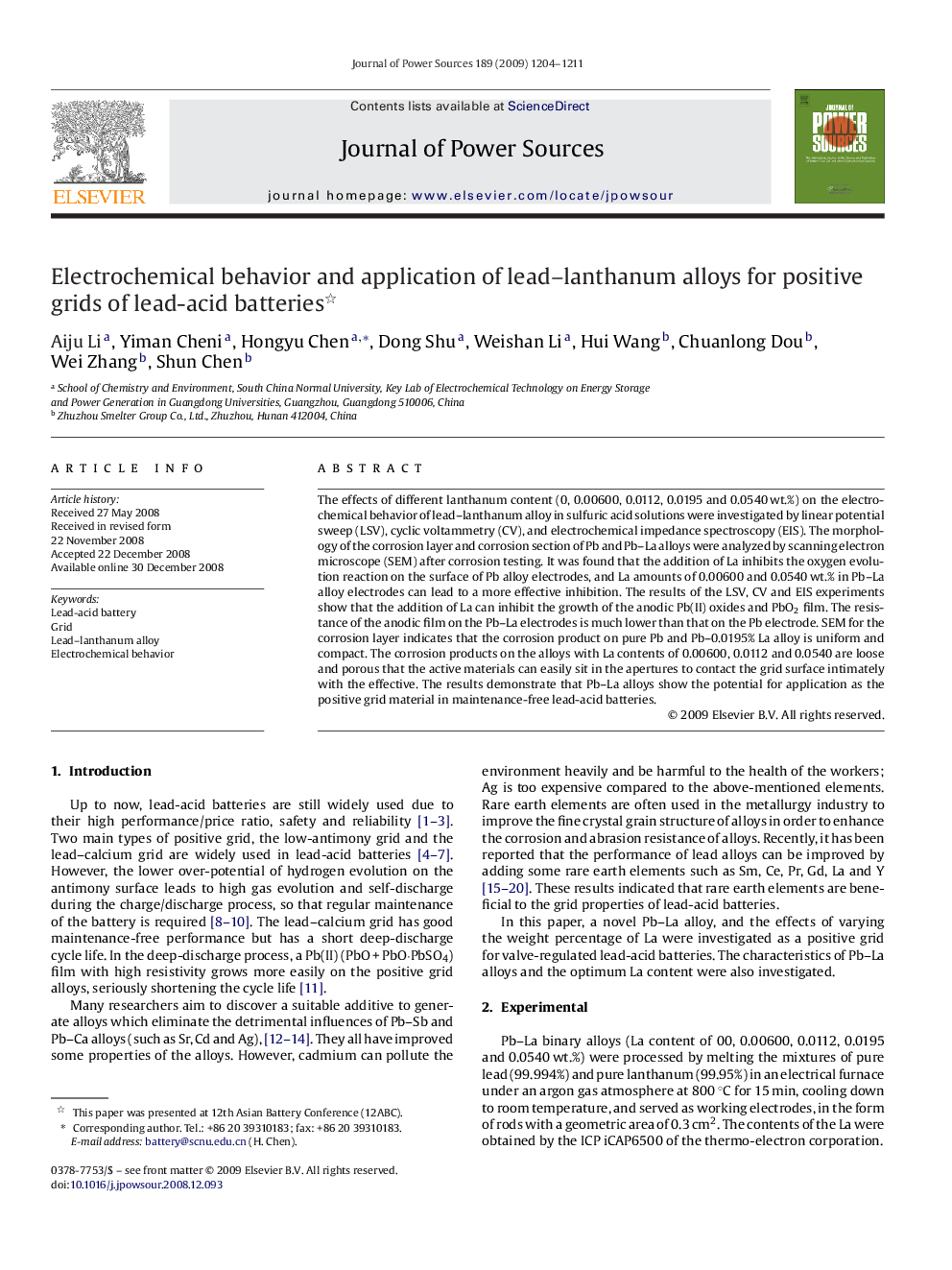| Article ID | Journal | Published Year | Pages | File Type |
|---|---|---|---|---|
| 1290004 | Journal of Power Sources | 2009 | 8 Pages |
The effects of different lanthanum content (0, 0.00600, 0.0112, 0.0195 and 0.0540 wt.%) on the electrochemical behavior of lead–lanthanum alloy in sulfuric acid solutions were investigated by linear potential sweep (LSV), cyclic voltammetry (CV), and electrochemical impedance spectroscopy (EIS). The morphology of the corrosion layer and corrosion section of Pb and Pb–La alloys were analyzed by scanning electron microscope (SEM) after corrosion testing. It was found that the addition of La inhibits the oxygen evolution reaction on the surface of Pb alloy electrodes, and La amounts of 0.00600 and 0.0540 wt.% in Pb–La alloy electrodes can lead to a more effective inhibition. The results of the LSV, CV and EIS experiments show that the addition of La can inhibit the growth of the anodic Pb(II) oxides and PbO2 film. The resistance of the anodic film on the Pb–La electrodes is much lower than that on the Pb electrode. SEM for the corrosion layer indicates that the corrosion product on pure Pb and Pb–0.0195% La alloy is uniform and compact. The corrosion products on the alloys with La contents of 0.00600, 0.0112 and 0.0540 are loose and porous that the active materials can easily sit in the apertures to contact the grid surface intimately with the effective. The results demonstrate that Pb–La alloys show the potential for application as the positive grid material in maintenance-free lead-acid batteries.
